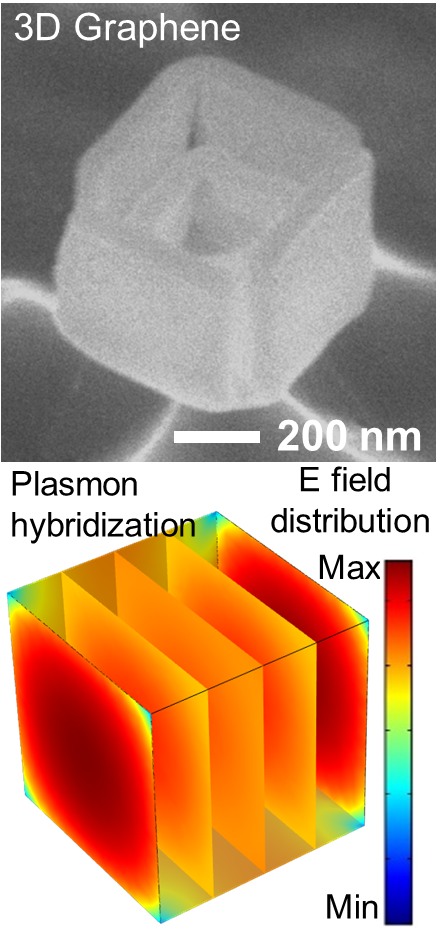Near-field enhancement (NFE) in graphene has been utilized for several applications including highly sensitive detection of targeted molecules, catalytic increase of rate of reaction under milder conditions by generation of energetic charge carriers, shift of thermodynamic equilibrium favorable for redox reactions, and high numerical aperture waveguides capable of achieving long propagation lengths. The most common technique to enhance the NFE efficiency is the coupling of adjoining nanostructures to produce larger areas of NFE. The coupling of adjoining graphene nanostructures induces multiple non-homogeneous hotspots, resulting in the overall enlarged area of NFE. However, this technique does not significantly change the exponential decay away from the surface of the GNR. Thus, plasmonic nanostructures that reduce the rapid decay of the NFE away from the surface of the graphene and extend the NFE over a larger area and into the bulk volume are required to enhance the optical properties of the 2D material and leverage the full potential of graphene for commercialization of graphene-based products utilizing the NFE. The goal of this program is to conceptualize, realize, and characterize large hotspots and volumetric light confinement (NFE) induced by 3D plasmon hybridization in graphene forming 3D nano structure. In addition, the novel optical property will be applied for the development of chip-scale ultra-sensitive biomolecular sensors.

UMN MRSEC
435 Amundson Hall, 421 Washington Ave. SE, Minneapolis, MN, 55455
P: 612-626-0713 | F: 612-626-7805